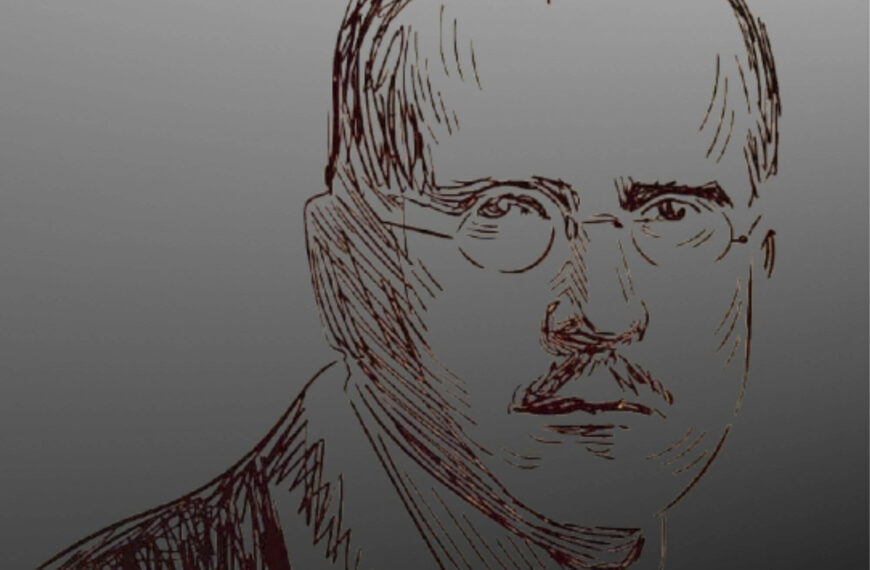The Apollo 13 Moon Mission failed to deliver. Its three astronauts, James Lovell, Jack Swigert and Fred Haise, returned alive in a brilliantly salvaged operation. The Moon Walk is something iconic, something celebrated. But the positivity of the time comes across in another moon mission, a mission that failed disastrously, but which spells out a story of human endeavour that was no less. Sometimes failure is as valuable and memorable as success. Neelum takes us down the memory lane, revisiting the March 11, 1970, issue of Life Magazine, in her weekly column, Gour’s Antiquarium – Retrobrowsings, exclusively for Different Truths.

I have chosen a thrilling article out of Life Magazine, May 11, 1970. As you read it, you will understand my reasons for choosing it. You don’t have to be an astrophysicist to follow the minutiae of detail. And by now astrophysics has advanced way beyond what it was in 1970. But beneath all the physics there lurk striking existential truths of life and crisis management. The Apollo 13 Moon Mission failed to deliver. Its three astronauts, James Lovell, Jack Swigert and Fred Haise, returned alive in a brilliantly salvaged operation that gives me goose- bumps, even as I read it after almost fifty years. I must describe that Star Wars atmosphere of the 1960s for you.
In our North Indian town of Allahabad we were used to sleeping out in the open on summer nights in our gardens and courtyards and terraces. The coolth of moist, sprayed earth, the overhanging shadows of trees, the moon-washed blue-black night sky and the chill starlight form foundational childhood realities to my mind. And some time in the mid sixties, there was the excitement of waiting for the Sputnik. It looked like one more star, except that it moved slowly across the sky! We lived closer to the stars then than we do now. I had grown up spelling out the Great Bear and the Little Bear and the Hunter. From the dog Laika to Yuri Gagarin, we knew them all, as kids now know the names of film stars.
Then in July 1969 came the unprecedented moon-walk of Neil Armstrong. It was the 20 th , my mother’s birthday. We sat up late, listening to the Voice of America Broadcast on our Murphy transistor radio. There was a scratch and a crackle in the air, and then a human voice. I could not catch the words but there was no mistaking the sensation of a whole planet holding its breath, conscious of being caught up in a highlighted micro-second of history. Next morning, at school – I was in Class 9 then – we found, written up in bold chalk letters on the blackboard by our fantastic, maverick teacher: Today Man Has Set Foot on the Moon. History Has Been Made.
In the days that followed every debate, every school symposium, every essay, somehow touched upon human progress and used those words: A tiny step for a man, a giant leap for mankind. Yes, that was the decade of telescopes and rooftop planet-watching. My Dad was Director of the State Science Institute those days and sometimes I was included in those breathtaking night watches.
Human Endeavour
The Moon Walk is something iconic, something celebrated. But for me the positivity of the time comes across in another moon mission, a mission that failed disastrously, but which spells out a story of human endeavour that was no less. Sometimes failure is as valuable and memorable as success. Let the three astronauts tell their own story. Here’s James A. Lovell:
“Some people would call the mission of Apollo 13 a failure. I look back on it as a triumph: a triumph of teamwork, initiative and ingenuity, on the ground and in the spacecraft. The possibility of catastrophe in space has always been there. I recall John Glenn remarking that whenever you are dealing with high speeds, long distances, thousands of pounds of highly volatile fuel, vacuum pressures, thousands of pieces of machinery and electrical equipment – well, you are taking risks. We all know that, and we accept the risk. Of course when you train to fly a mission you never think that ‘it’ will happen to you. Emotionally you feel that it won’t happen to you, that it won’t be your wristwatch that breaks down…. For whatever reason ‘it’ did happen on this mission. The turn of the dice came up and we did have an accident. We then had problems and they were serious…. The triumph was in proving our ability to cope with these problems, solve them and get a crew back to earth under emergency conditions. I like to think that Apollo 13 contributed a great deal to ‘maturing’ the space program and to realistic thinking about it. Continued success is a commodity too easily taken for granted. Things can go wrong, and it is well to be reminded of that. When ‘it’ does happen, you simply do everything possible to keep going, to keep functioning, to stay alive.”
That things were going horribly wrong is conveyed by a stark detail, in Lovell’s words: “Then we heard a bang.” Jack Swigert candidly confesses that “it scared hell out of me.” Lovell recounts how he “…quickly spotted the state of the three fuel cells which generate the command module’s power and keep its life-support systems going. One had already gone, and a second one was slowing down. I looked at the oxygen pressure indicators. Tank No. 3 read zero and tank no. 1 was dropping fast. Without fuel cells, Odyssey simply could not operate for a sustained period; there was reserve battery power, but those three batteries were part of the re-entry system and they just would not last long enough to take you to the moon – or even get home from where we were…. They were fast going anyway. When I…looked out the window what I saw was pretty alarming. The sun was shining on gaseous matter that was being vented from the service module at a tremendous rate. It was probably oxygen. At that time we were losing the No. 1 oxygen tank – the No. 3 tank had gone in about 50 seconds – so the oxygen must have been venting from No.1. Now it was a question of survival without the fuel cells. It became apparent and quickly, that the only way to do that was to get out of this powerless Odyssey and into the lunar module.”
Fred Haise remembers how “I felt the wall of the tunnel shiver. The master alarm squealed through my earphones. Almost simultaneously Jack yelled down to me that there was a warning light on. I continued through the tunnel from the LM to the command module….The problem, at first thought to be transient, was in the electrical system…. By the time I got back, one main voltage reading was at the lower limit of the voltage meter. I recall a profound sinking feeling. My first thought was – well, we’ve blown the lunar landing…..A bitter personal disappointment. While attempting to reshuffle AC loads, the master alarm again flashed on. The light in front of me burned a bright red. More trouble in the electrical system. The ground ordered me to close the reactant valve on fuel cell No. 3 and soon afterwards on No.1.We asked them to repeat each instruction to make absolutely certain there were no misunderstandings, because once a fuel cell is shut down, there’s no way to repower it in space. After shutting down two power cells I watched the oxygen pressure bleed away in the other one. I grasped the full seriousness of the crisis that now enveloped us.’’
Was ‘Free Return’ Possible?
James Lovell continues: “So the first big question had now answered itself: the mission had to be aborted. We were not going to land on the moon, but getting home was not all that simple. We were, at the time ‘ít’ happened, 205,000 miles from earth, on a trajectory that would take us to within 60 miles of the lunar surface, but which was not designed to return us home if something went wrong. So Mission Control’s first request was that we do a maneuver to get us back into the ‘free return trajectory’, which is sometimes called the ‘slingshot’. This means going around the moon once, starting at the leading edge – roughly the left hand side of the moon as seen from earth – with the proper trajectory. The moon will then put you on a free return coast when you come around the trailing edge after one pass on the back side. ‘Free Return ’is simply a free ticket home.
“The obvious thing to do was fire the descent-propulsion- system (DPS) engine of Aquarius which had been designed to power the lunar module on its final descent to the moon. Without that burn of the DPS engine, we would go around the moon all right, but we would have wound up stranded a few days later in a weird egg-shaped earth orbit. Our first order of business was to avoid this, because we never would have got closer than about 2950 miles from the earth, and there just wasn’t anything we or Mission Control could have done….That was the worst time – those few hours after the accident. I was worried about the systems in Aquarius. Nothing in the lunar module had been designed for the work we were now asking it to do. And we had to have power. We might have been able to figure out a way to fire the big service-propulsion- system engine which was built to get us into lunar gravity and out again…. The best bet was to fire the DPS engine in Aquarius; if it failed, we might be able still to do something with the lunar module’s less powerful reaction-control thrusters, but we couldn’t be sure about that either.
“So there was the big feeling of relief when that engine fired for 30 seconds to boost us up and take us around the moon at an altitude of about 130 miles instead of 60 miles. Now we had our free ticket home – if our consumables held out: oxygen, electricity, especially water. That first burn of the DPS engine put us on a course that would land us in the Indian Ocean, but that was the least of my worries…. We could have survived for some time in the Indian Ocean, the South Atlantic or wherever, waiting for a destroyer to pick us up. But since we wanted to get back fast without depending solely on free return, we wanted that DPS engine to fire again. In fact, as far as the three astronauts were concerned, ‘any old ocean would do as long as it was on the Earth’.”
Multiple and Challenging Complications
The complications that quickly followed were multiple and challenging. Long hours without sleep, a spacecraft that became as cold as the inside of a refrigerator, the struggle to conserve power, oxygen, and above all, water, the ongoing exercise to keep the air clear of carbon dioxide by using a contrived apparatus to spray lithium hydroxide, following close instructions from Mission Control. Even “the problem of dumping our urine. It sounds funny now but it wasn’t funny then.” It couldn’t be consigned to the vast expanses of space because anything thrown out of the spacecraft might affect the delicate angle of the trajectory required to bring the crew and the craft back into the earth’s orbit. So it was put away in bags and stored in the craft. The risks were mind-boggling. “If we failed to…to blast into the free return trajectory, we were doomed to swing around the moon, missing the earth and going into eternal orbit around it.” There was the collateral risk of coming down too fast and flat and hitting the earth’s atmosphere so hard that the spacecraft bounced right back into space again and spent the rest of its material existence going round and round the earth. When the carbon dioxide within the craft crossed a certain level, the crew would just drowse off slowly and go to sleep forever. Maybe to watchers on earth a faint star-like pinprick of light would be seen navigating the sky at a fixed hour every night, before the stellar universe shifted and the great sweep of infinity swallowed it.

As Lovell put it, the Apollo 13 Mission “challenged men to come up with solutions to problems they had never run into before.” In an emergency so dire that “it probably is just as well that we didn’t see the extent of the damage to the service module earlier; we were sufficiently worried without knowing that a whole side panel had been blown away (or had dropped off) and the service module’s innards were just hanging there.”
What does such an experience feel on the inside? “I’m not a romanticist,” says Jack Swigert, “…My life did not flash before me. You react the same way as a pilot in an airplane emergency. In the first, short fraction-of- a-second you don’t think about anything. Then you focus in on what you know and what you’ve been trained to do and do it in as cold and calculating a way as you can muster….It went incredibly fast for all of us.” Later time slowed down and there were long hours to think. “Our teamwork was fantastic. We were one body with three heads and six hands. Everybody meshed.”
Disaster and Grandeur
And Fred Haise describes how “there was a dreamlike quality to that long and extraordinary night. Dreamlike not in the sense that I didn’t know where I was or what was happening but in the sense that I was abruptly locked into a problem in a strange place I had never been to before.” In the middle of disaster there is a disengaged spell of sheer wonder at the spectacular sight: “After the explosion, debris was spewing out of the service module and it was impossible to distinguish the real stars from the fake ones. The debris – frozen particles mixed with some tinny chunks of metal – looked like a snow shower out of the window. The sparkly snowflakes glistened spectacularly in the bright sunlight….The snow shower of debris; the moon, looming close and big; the dazzling sunshine – for once unfiltered by layers of air….” The transcendent grandeur of the unknown universe and the composed confidence of science that bravely burns a trail into untrodden terrain, both make way for a highly sensitised moment of beauty that surpasses anything the imagination could have ever promised.
We know that with “massive assistance from ground control”, the Apollo 13 Mission was a historic demonstration of “accomplishment under stress”. After 700 hours in space the Mission ended, closely monitored by ground control, in the Pacific, as planned. And Lovell’s calm words herald the future: “We will find out what went wrong. Then we will take steps, the proper steps; we will make the fixes; and then we will go to the moon again.” That was forty-six years ago.
Only recently the unmanned spacecraft Juno reached the orbit-zone of Jupiter, after five years of journeying in space. To us, those sixties children who lay in wait for the icy sparkle of the Sputnik in the June sky, it is thrilling to imagine the far-flung reaches of human endeavour that our lifetimes have witnessed. I do wish it had all been positive things like this.
©Neelum Saran Gour
Pix sourced by author and net.




 By
By

 By
By